White-faced Ibis at Yolo Basin Wildlife Area photos by Larry Jordan
Last month when I visited the Yolo Basin (Vic Fazio) Wildlife Area it was yet to be flooded. This last weekend, heading down to the bay area for the California Burrowing Owl Consortium meeting, I checked with the Department of Fish and Game and found that they had begun flooding the refuge.
Dave Feliz, the wildlife area manager, mentioned that part of the wetlands, East of the auto tour route, were flooded rice fields where he had seen quite a few birds recently. He told me where to park to walk the closed road out to the fields. That is where I found hundreds of White-faced Ibis and Snowy Egrets foraging, preening and relaxing in the shallow waters and atop the surrounding berms.
These beautiful iridescent wading birds travel the Pacific Flyway to and from their breeding grounds, seeking isolated reservoirs and irrigated fields as feeding and resting sites. Here is a distribution map for the White-faced Ibis courtesy of Birds of North America Online.
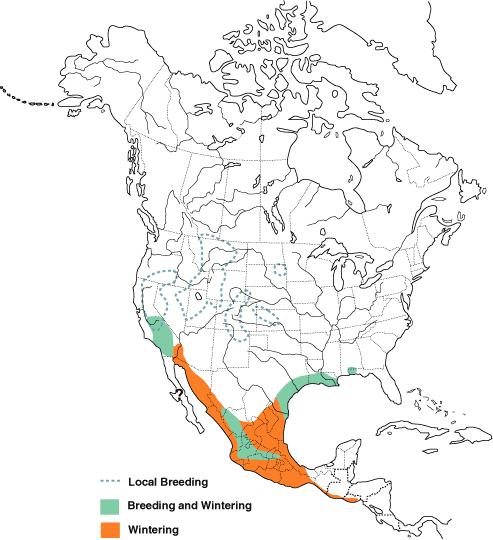
It must have been a good breeding season for the White-faced Ibis in the west because, like I said, there were hundreds of adults and hundreds of juveniles gathered in the flooded fields. Here you can see the juvenile on the left, still with the dark eyes and yet to sport the more colorful plumage of the adult on the right with the red iris.
A large number of Snowy Egrets
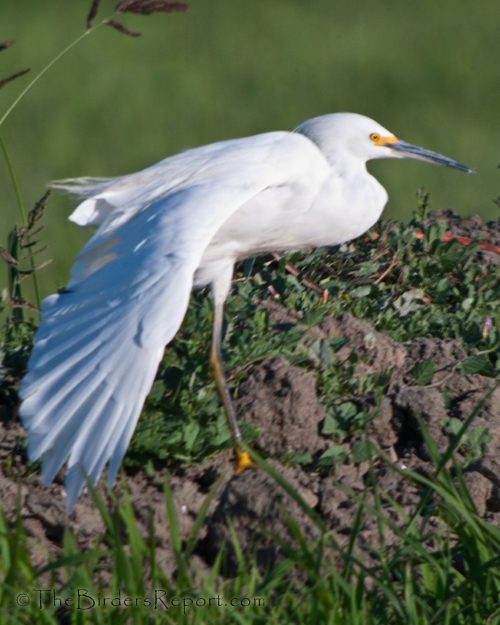
and several American White Pelicans were also enjoying the bounty.
The only family of birds I noticed in greater numbers were the gulls. I took some in-flight shots with the digiscope set-up just to see what I could get, as the pelicans took off, and most of the other birds along with them.
Going through the photos I spotted what looks like a Caspian Tern flying with the gulls. What do you think?
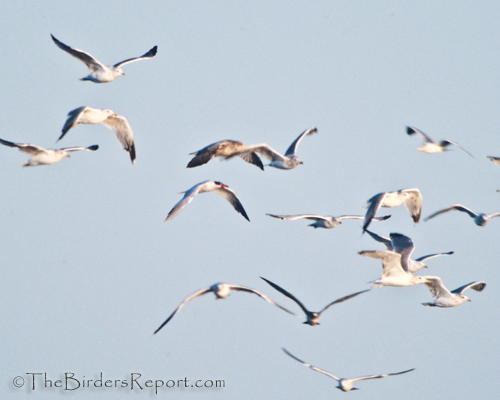
I enjoyed my time at Yolo Basin Wildlife Area and had a fantastic time at the California Burrowing Owl Consortium meeting (more on the controversy surrounding the California Burrowing Owl in upcoming posts).
In the meantime, here are a couple more shots of American White Pelicans I spotted right next to Interstate 5 on the way home Sunday afternoon. It appeared that they were scooping up fish from a huge pond, separated from the main North-South thoroughfare in California by nothing more than a pasture fence.
If you want to see some more great bird photos, check out Bird Photography Weekly and don’t forget to visit the latest edition of I And The Bird over at Birds on the Brain!
I always keep a running link in the right hand sidebar to the “I And The Bird” carnival so you can get a head start on the upcoming edition. You will note after Grant’s edition #134 comes out this Thursday, the next edition will be hosted by yours truly! Get your submissions to me by September 28th for the 135th edition on September 30th!

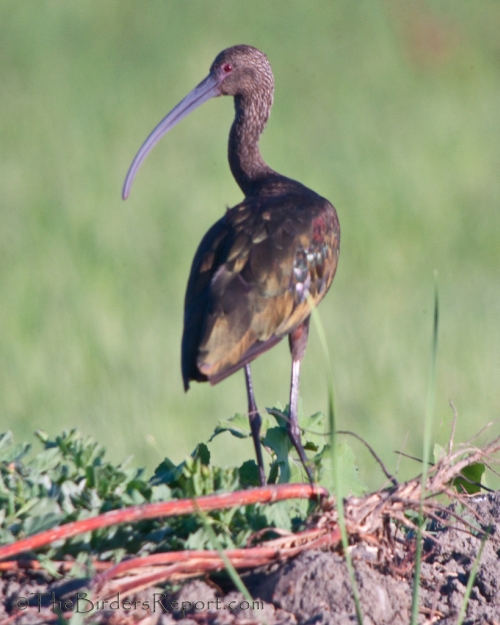
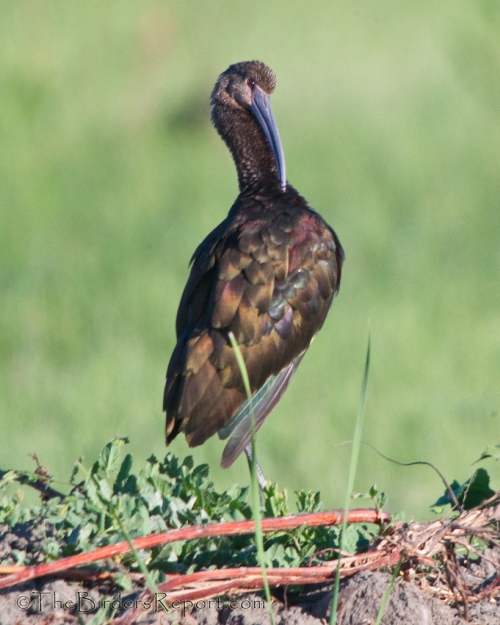
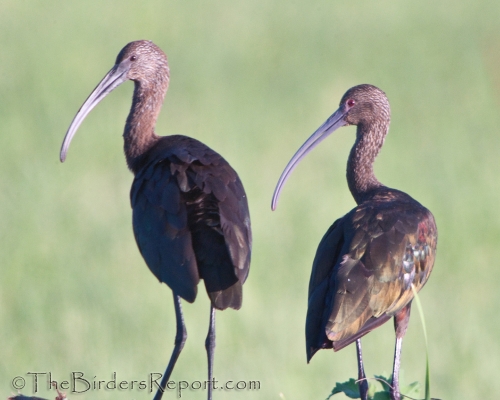
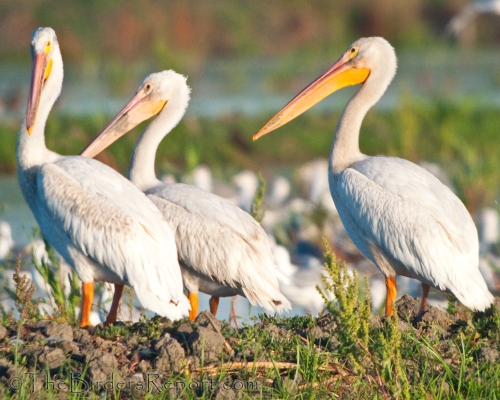
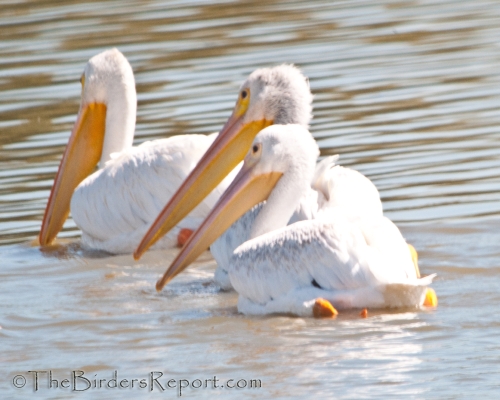
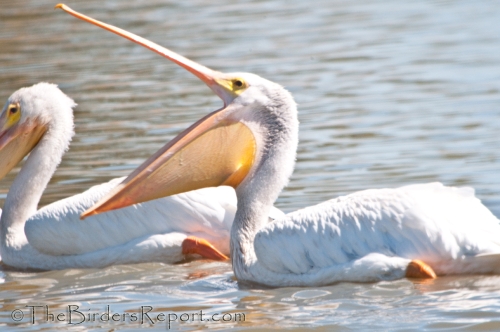








Comments on this entry are closed.
the white faced ibis don´t seem to have a white face. 🙂
I like seeing this photos as we don´t have ibises in Sweden.
The white face becomes apparent during breeding season when this Ibis’ bare red face is surrounded by a narrow brilliant band of white feathers
Another one of your very informative postings Larry. I was surprised that the ibis doesn’t travel a bit further south in winter but then I guess the weather is pretty kind to them even in winter? Those pelicans are pretty cool too being able to scoop up so much food in one go. A big tern I agreee, do you get other big terns down that way?
A very interesting post, Larry. I have read elsewhere about the practice of flooding fields at certain times to make wetlands – and its great to see how well it works with the variety of birds you have photographed. The Ibis is beautiful and of course I always love Pelicans!
Excellent photo series Larry! There were several reports of White-faced Ibis in Maine this year and I actually got to see one. Glossy Ibis are the norm around here.
Just like NatureFootstep says my first thought was: no white face for the white-faced Ibis…
And definitely a yes to the tern.
I like the yawning or so pelican 😉
I am a ‘Mainer” who photographed a white faced ibis in Maine in June. It actually had a white face.
This is amazing, Larry!
I’ve just a few days ago seen Pelicans in the Zoo here (don’t ask) and I was wondering how awesome it must be to see them roaming free….!
Great post and photos, Larry! The Pelicans are a favorite of mine but the White faced Ibis is cool too.
Excellent post. Great birding this time of year..Love the last Pelican Photo!
@Phil there is also a population of White-faced Ibis that live year round in South America, mainly from southwest Peru, central Bolivia, Paraguay, and extreme southern Brazil, south to central Chile and central Argentina. We do get the smaller Forster’s Tern inland here also
@Mick the California Department of Fish and Game and the U.S. Fish and Wildlife Service have worked hard to restore thousands of acres of wetlands in California. You can see a bit of its history here.
@John thanks! The Glossy Ibis would be a lifer for me!
@Natalie thanks fore the confirmation on the Tern and yes, the pelicans take this posture and tip their heads up to swallow their catch
@Robin it must have been in breeding plumage. I will check out your site for the photo. Thanks for coming by with a comment!
@Nicole pelicans are amazing and beautiful birds. Very fluid as they fly.
@Eileen thank you very much
@Dawn thanks for stopping by. I have been so busy lately. I think of you and Jeff often.
It definitely looks like a Caspian Tern in there with the gulls! A personal favorite of mine, I really enjoyed the Snowy Egret photograph, and it’s awesome you were able to see a large group of them. I worked on a Snowy Egret restoration project on a small island in the Gulf of Maine; we set up lots of decoys and played their calls over a loudspeaker, but didn’t have any luck. On a neighboring island, however, there has been much luck with a similar restoration effort aimed at reestablishing tern breeding populations. Large numbers of Common Terns, Arctic Terns, and Roseate Terns now breed on the island each year. Thanks for sharing the great photographs!